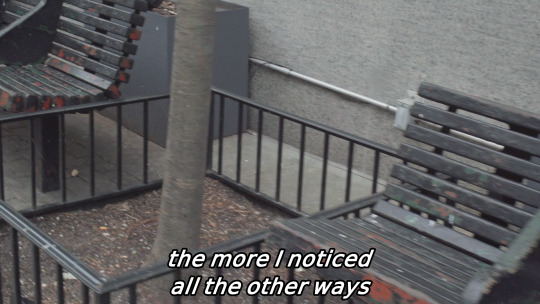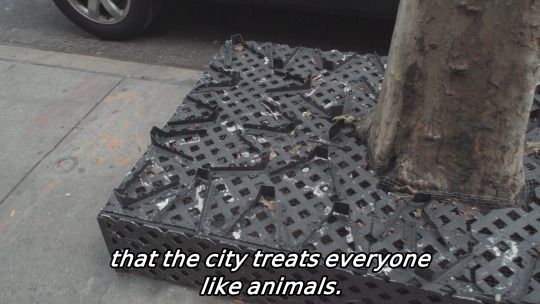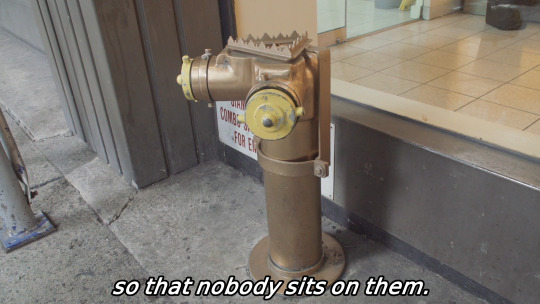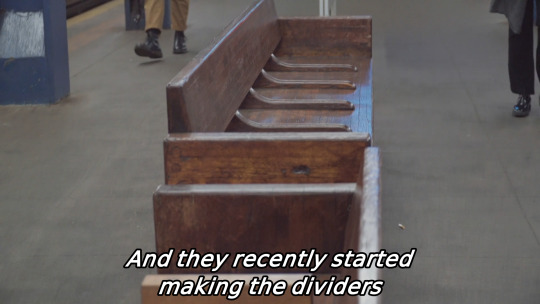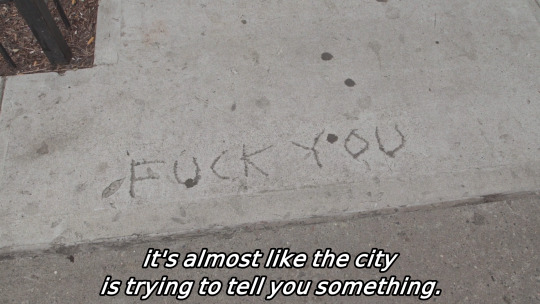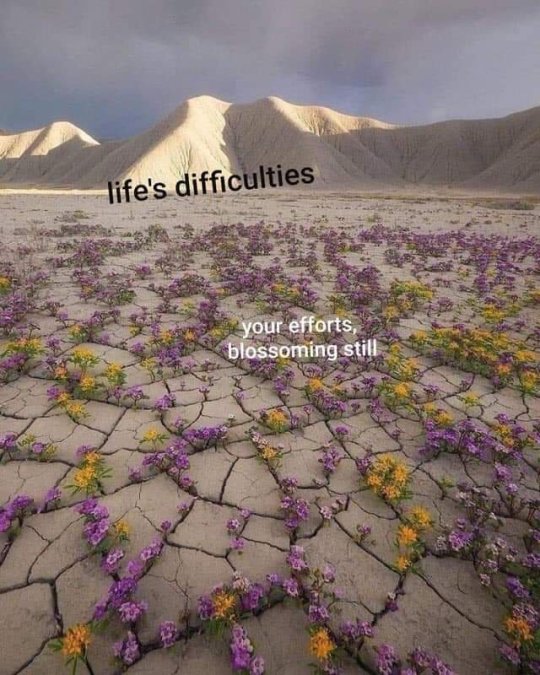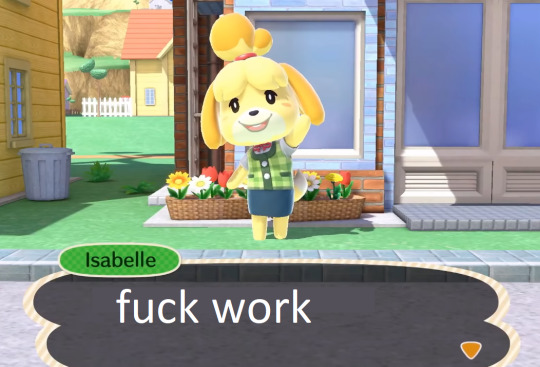proudimmortaldemonway
699 posts
Don't wanna be here? Send us removal request.
Text
the fact that we need 8 hours of sleep is ridiculous we should only need 4 and the other 4 should be used to be cozy in your bed and rub your legs together like a cricket and listen to music and think about your little scenarios
228K notes
·
View notes
Text
One day you think: I want to die. And then you think, very quietly, actually I want a coffee. I want a nap. A sandwich. A book. And I want to die turns day by day into I want to go home, I want to walk in the woods, I want to see my friends, I want to sit in the sun. I want a cleaner room, I want a better job, I want to live somewhere else, I want to live.
104K notes
·
View notes
Link
Advance - a short forward movement. Blade - the length of metal that is used for attacking or defending (i.e. the entire metal length beyond the guard). Boar’s Tooth - a guard where the sword is before your front right leg. Deflect - actively change the incoming sword’s speed or angle by hitting it with your own sword (or foot etc) Diagonal - Moving forward diagonally forward - right. Edge - the sharp side of the blade. Japanese blades were typically single edged, while Medieval swords could have both sides sharpened. Empty Fade - Leaping backwards as if to fade but immediately leaping forwards again. Fade - Leaping backwards while leaving the feet in the same orientation. False Edge - the back / trailing edge of the sword, usually the one you do NOT intend to cut with. Front Guard - a guard where the sword is held vertically in front of your face. Full Iron Gate Guard - a guard where the sword is halfway between your right and left legs, angled right. Fuller - a groove running down the length of the blade. I have some books which claim this is a “blood groove” to help blood flow out of an enemy but other books which seem more reliable say it’s to help the sword come out of a body without being caught (it breaks the suction). Grip - the part of the hilt you grip with your hand for control. Guard - a cross-piece on the hilt that keeps your hands safe from your opponent’s weapon sliding down the length of your blade. Also called a cross-guard. Guard - (meaning #2) - a position of safety, a pose where you can defend yourself from attack. Guard of the Woman - a guard where the sword is over your right shoulder, behind your back. Half Iron Gate Guard - a guard where the sword is held before your left leg. Hilt - the generic name for the entire part of the sword near your hands, the part that is not the blade. Long Point - a guard where the sword is straight out from your chest, with your arms extended. Lunge - leaping forwards while leaving the feet in the same orientation. Pass Back - Taking a step backwards by moving your front foot into the rear position. Pass Forward - Taking a step forwards by moving your rear foot into the front position. Pivot - Rotating 180 degrees while keeping the front foot stationary. Pommel - the knobby end of the hilt, used by the second hand for a ball-in-socket pivot point in many moves, or merely as a counterweight in one handed attacks. Posta - the Italian word for guard, as in a position of safety. Posta drill - a series of movements from guard to guard, to help you learn the guards. Retreat - a short movement backwards. Shed - to allow a sword to slide away off your sword without trying to impede / change it, so you are then free to attack or move. Short Guard - a guard where the hilt is at your hip and the sword is pointing up and forward. Slope - moving diagonally backwards back and left. Stance - the position your body is in to be ready for an attack or defense. Step Across - Rotating 180 degrees by crossing the front foot across the back foot and then turning in place.f Tail Guard - a guard where the hilt is at your hip and the sword is pointing behind you. Tip - the pointy end of the blade. True Edge - the front / leading edge of the sword, usually the one you intend to cut with. Two Horn Guard - a guard where the sword pommel is at your chest with the sword pointing out. Window Guard - a guard where the hilt is at your ear and the sword points forwards. Medieval Swords and Swordfighting Lisa Shea Website Main Page
2K notes
·
View notes
Text
How to Write a Synopsis
Back when I was doing my MA program, I typed up a guide to writing query letters. It’s the post from this blog that I’m most proud of: a thorough step-by-step guide that combines days and weeks of research, and dozens of sources, into a neatly packaged 1,800-word post.
And I have to admit, I didn’t write it for tumblr. I needed to write a query letter myself for a publishing class, and my post was little more than compiled homework notes, saved as a Tumblr post for posterity.
I’ve actually had pieces of this in my drafts for years, but now I actually have to write a synopsis and I’m piling up the research, so I thought it was finally time for the sister to my query post to be published here.
But first…
What is a synopsis?
A synopsis is a 1-2 page summary of the events that transpire in a book, either proposed or already written. It’s used to give people who haven’t read your book a quick overview, so they know the story that’s being told in the book without having to read it.
When is a synopsis necessary?
Some literary agents request synopses along with query letters. More often, they’re used slightly later on in a writer’s career, when they have an agent or an editor and they need to submit a proposal for a new idea or project. A synopsis can also be used later on, in situations that don’t involve the author. For instance, when an editor pitches the book to the marketing and publicity team, who may not have time to read every book they’re working on. Unlike a query letter, the book doesn’t necessarily have to be written when you’re submitting its synopsis.
Basic Style
The job of a synopsis is to lay out the story with little fuss and no frills. They let the person you’re pitching know what they’re going to find in that giant stack of pages on their desk or in that obscenely long Word document (or else in the Word doc they’ll eventually receive).
Most professional synopses follow these rules:
They’re told in third person
They’re told in present tense
Characters’ names are CAPSLOCKED at first mention.
They are double spaced.
They tend to avoid descriptions longer than this sentence.
They focus on the central conflict and the protagonist’s emotional journey
They spoil the ending
They should be 500 words or less. (That is 1 page single-spaced, 2 pages double-spaced.)
HOW TO WRITE YOUR SYNOPSIS
The plot
Writing your synopsis, you have one goal: to tell a 50,000-100,000 word story in 500 words. It can be a little difficult to do this right. A great way to do this is to identify the key turning points in your protagonist’s story.
Do you remember those little plot roller coasters you’d make in elementary school? They’d usually be pointy witch’s-hat shaped things labeled with the terms: “beginning, rising action, climax, falling action, and resolution.”
Those turning points are the events you should be including in your synopsis.This is the structure you want to emphasize to your reader. You want to make abundantly clear that your story works like a story, that the events of your book have a beginning, a middle, and an end, that there’s an intriguing beginning, an exciting climax, a satisfying conclusion. You don’t want to just list out the events of your novel, but highlight the function of those events. X moment is important because it’s the inciting incident, the moment that takes the protagonist from their normal life and throws them into the story.
There are tons of great story roadmaps out there, that go into more specific story elements. The Hero’s Journey is the most famous example of a detailed, and mostly universal, story structure. There’s also the three-act structure that’s famous among screenwriters.
Find a structure that fits your story the best and use that to identify the events of your story that need to make it into your synopsis. I’ll link to different sources at the bottom of this post that will give you variations of story structure.
If you can correlate key scenes in your novel to the descriptions of these plot points, you’ll find an easy roadmap to navigating the many events of outlining your novel.
Your protagonist’s journey
Your protagonist is the heart of your story, and should be the heart of the synopsis, too. The protagonist’s emotional journey may not string all of these plot points together, but it’s going to be what makes them matter to the reader. The human element of your story has to be represented in your synopsis.
There’s no room for long descriptions, so you’ll have to be smart about finding a few terms that not only tell your reader who the character is, but what their story will be. For instance, if your story is about someone trying to get their critically-panned paintings in the Museum of Modern Art by breaking into the museum and installing the pieces themselves, you may want to introduce them with a sentence that begins like so: “When IGNATIUS, an ambitious and untalented struggling artist, discovers his work is rejected from yet another gallery…”
In addition to these descriptive terms, you should spell out what your protagonist wants (or wants desperately to avoid) and their stake in the events of the story.
Along the way, tell us how these key aspects of their persons change due to the events of the story, or else how they influence the events of the story. Tell us about how after raving reviews for his DIY MoMA exhibit came in, Iggy realized that though he still liked painting, his talents actually lay in performance art. Untalented to talented, struggling to successful, all because his ambition pushed him to try new and daring things.
Tips:
As in query letters, you only name the most important characters and locations outright. If you’re writing a synopsis for Harry Potter, you’ll want to use Harry’s name in the query, but most other people and places can be referred to by their function in the novel. Ex: Aunt Petunia and Uncle Vernon can be “his cruel relatives.” Hermione and Ron can be “his friends.” Even Hogwarts can be a “school for people with magical abilities.” This makes it easier for a reader to understand what’s going on in your story. Too many names in such a small amount of space can be overwhelming.
All telling, no showing. This is one piece of writing where you’ll want to tell, instead of show. You need to get to your point as quickly, as clearly, and concisely as possible; this isn’t the place for creative storytelling.
Oftentimes, synopses are given along with other materials, such as pitch letters and sample pages. While a synopsis should be captivating in-so-far that it’s well told, and it should maybe be a little stylish, being captivating and stylish aren’t its main goals. Additional materials like sample pages and pitches have more room for creative flourishes and can do a better job of selling the story, while the synopsis focuses on telling it.
Your synopsis should show that you know how to tell a story. While a synopsis doesn’t sell a story like a query, it should still illustrate the fact that you have an interesting, unique and well-structured plot. When finished, your reader should be able to think to themselves “that’s a good story. I want to read that.”
Your first draft will be too long. Your first draft of a synopsis will always be at least a page or two longer than it should be. Identify the sentences and paragraphs where you explain why a thing happens and ax them. Identify sentences where you repeat yourself and ax them. Identify descriptors that aren’t vital to understanding of the story and ax them. Once you make your first painful cuts and see that the story still makes sense without those things, you’ll start to get a better understanding of what can and cannot be taken out of your synopsis.
Bibliography:
6 Steps for Writing a Book Synopsis
How to Write a 1 Page Synopsis
The Hero’s Journey
Learn How to Write a Synopsis Like a Pro
How to Write a Novel Synopsis
The Secrets of Story Structure
Three Awesome Plot Structures for Building Bestsellers
7 Ways Write Plot Outline
Synopsis for “Bill and Ted’s Excellent Adventure”
How to Plan Your Novel Using a 3 Act Structure - ex. “The Hunger Games”
Story Structure by Plot Point for “Raiders of the Lost Ark”
8K notes
·
View notes
Text
i dont think i will ever be over dragon age 2. like. bioware made an epic fantasy story about a chosen one having to save a country and stop the apocalypse and then they made the second installment of the series be about the sociopolitical climate in ONE city through the lens of a family of refugees fleeing from the war of the first game and just. made it about political tensions and class dynamics and the influences of living in a church-mandated state and the growing tension over an occupied piece of the city and political killings and interpersonal conflict and power and its story is ENTIRELY character-driven. it has easily the most iconic set of companion characters. the premise of living through a story told over the course of ten years and knowing from the start that something really bad will happen in the end was so fresh and exciting. the fact that the acts really built on top of each other andhow much the city changed over time. and the game was so mature in terms of the topic of fighting against oppression in so many ways (im usually generous and say that the short development time left some things a bit wanting), and as much as some people say that the game treats mages and templars as being equally bad, i don't think that that is actually true about the game and it very earnestly tries to grapple with some pretty complex political dynamics.
and then the game completely flopped financially and was almost universally hated for its queer themes and its sympathy for "terrorism" and a lot of the things that stemmed from basically having no production time at all and then the studio just made another epic fantasy story about a chosen one that has to save the world from the apocalypse
4K notes
·
View notes
Text
i think an uncomfortable truth is that there is an inherent arrogance one has to overcome after spending too much time alone, which is not so obvious when it's forced (i.e. through ostracism) because the assumption is that someone who has been ostracized is more likely to lack confidence and thinks poorly of themselves. but then there's this dance between victimhood and low self-esteem yet also subconsciously believing that your own view or daily decisions are "correct" or "better" because you've never had anyone tell you otherwise, because you've been alone. and in addition have gotten used to being extremely independent and considering others' input doesn't even occur to you. so when others DO provide feedback, it's almost jarring, like you don't have a behavioral pathway with which to respond or receive the feedback so you just respond with irritation because your system is confused
12K notes
·
View notes
Text
site that you can type in the definition of a word and get the word
site for when you can only remember part of a word/its definition
site that gives you words that rhyme with a word
site that gives you synonyms and antonyms
1M notes
·
View notes
Text
Resources For Describing Characters
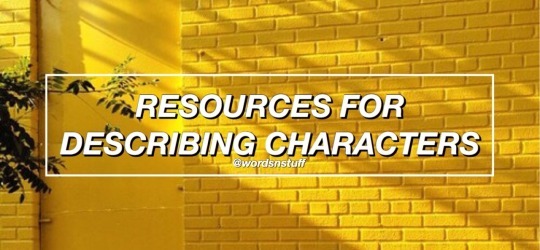
Physical Appearance
Arms
Athletic Build
Back
Butts
Cheeks
Chest
Chins
Curvy Build
Ears
Eyebrows
Eyes
Faces
Facial Hair
Feet
Fingernails
Fingers
Hair
Hands
Head
Hips
Jaws
Knees
Legs
Lips
Muscular Build
Neck
Noses
Shoulders
Slender Build
Sickly Build
Skin
Stocky Build
Stomach
Teeth
Toenails
Toes
Underweight Build
Character Traits
Affectionate
Ambitious
Bossy
Brave
Calm
Cautious
Charismatic
Clever
Conceited
Courageous
Creative
Critical
Curious
Determined
Diplomatic
Dishonest
Disorganized
Eccentric
Excitable
Friendly
Funny
Generous
Glamorous
Guarded
Honest
Impulsive
Independent
Intelligent
Just
Kind
Loyal
Manipulative
Mature
Modest
Mysterious
Naïve
Optimistic
Prejudiced
Persistent
Proper
Responsible
Sensitive
Sentimental
Serious
Shy
Reckless
Stingy
Stubborn
Talented
Thoughtful
Thrifty
Visionary
Wise
Witty
Worry Wart
Wounded
Talents & Skills
A Knack for Languages
A Knack for Making Money
A Way with Animals
Archery
Astral Projection
Astrological Divination
Baking
Basic First Aid
Blending In
Carpentry
Charm
ESP (Clairvoyance)
Empathy
Enhanced Hearing
Enhanced Sense of Smell
Enhanced Taste Buds
Farming
Fishing
Foraging
Gaining the Trust of Others
Gaming
Gardening
Good Listening Skills
Haggling
Herbalism
Hospitality
Hot-Wiring a Car
High Pain Tolerance
Knife Throwing
Knowledge of Explosives
Lip-Reading
Lying
Making People Laugh
Mechanically Inclined
Mentalism
Mimicking
Multitasking
Musicality
Organization
Parkour
Photographic Memory
Predicting the Weather
Promotion
Psychokinesis
Reading People
Regeneration
Repurposing
Sculpting
Self-Defense
Sewing
Sharpshooting
Sleight-of-Hand
Strategic Thinking
Strong Breath Control
Super Strength
Survival Skills
Swift-footedness
Talking With The Dead
Throwing One’s Voice
Whittling
Wilderness Navigation
Wrestling
Elemental Abilities
Miscellaneous
Voices
Voice Types
Speech Patterns
Speech Impediment
List of Character Flaws
List of Archetypes
Hairstyles
Describing Body Types & How They Move Around
Secrets To Give Your Character
Support Wordsnstuff!
Request A Writing Help Post/Themed Playlist/Writing Tips!
Send Me Poetry To Feature On Our Instagram!
Receive Updates & Participate In Polls On Our Twitter!
Like us and share on Facebook!
Read More On Our Masterlist & See our Frequently Asked Questions!
Tag What You Want Me To See With #wordsnstuff!
Participate in monthly writing challenges!
84K notes
·
View notes
Text
wait babe before we move on i need to break every barrel in this room to check for hidden items
130K notes
·
View notes
Text

about to go get my covid shot here wish me luck :). idk why they’re paying me to get it though
20K notes
·
View notes
Text
Honestly, people generally don’t want much… They want to eat their favorite food. They want to go to the seaside and smell the fresh air. They want to nap on the grass and listen to music. They want to hold their loved ones in their arms, and be held in return. They want warm clothes, be occupied with a profession/a hobby that does not smother them. They want to feel safe and unafraid. Mostly, they want to live without being ridiculed, manipulated or being forced. And this is why capitalism/modern life overall is so upsetting, depressing and even destructive. Because thinking about how small and simple things you yearn for & how hard it is to even be able to have them really wears you off
118K notes
·
View notes
Text
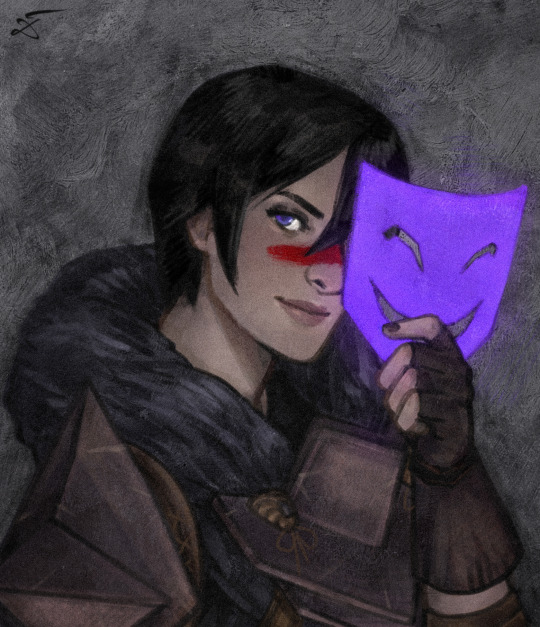
It's a lovely morning in Kirkwall and you're a horrible Hawke
6K notes
·
View notes

